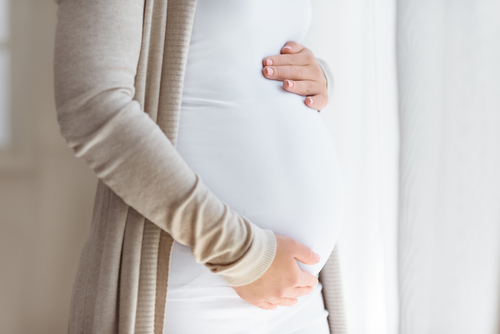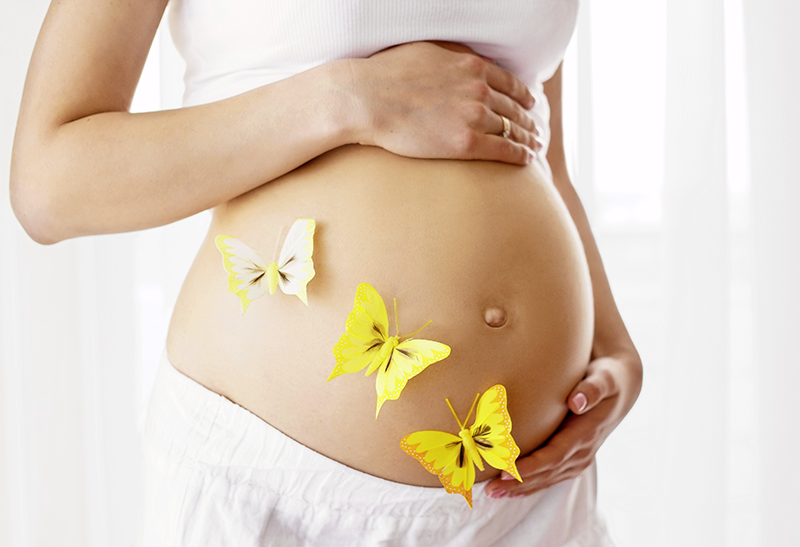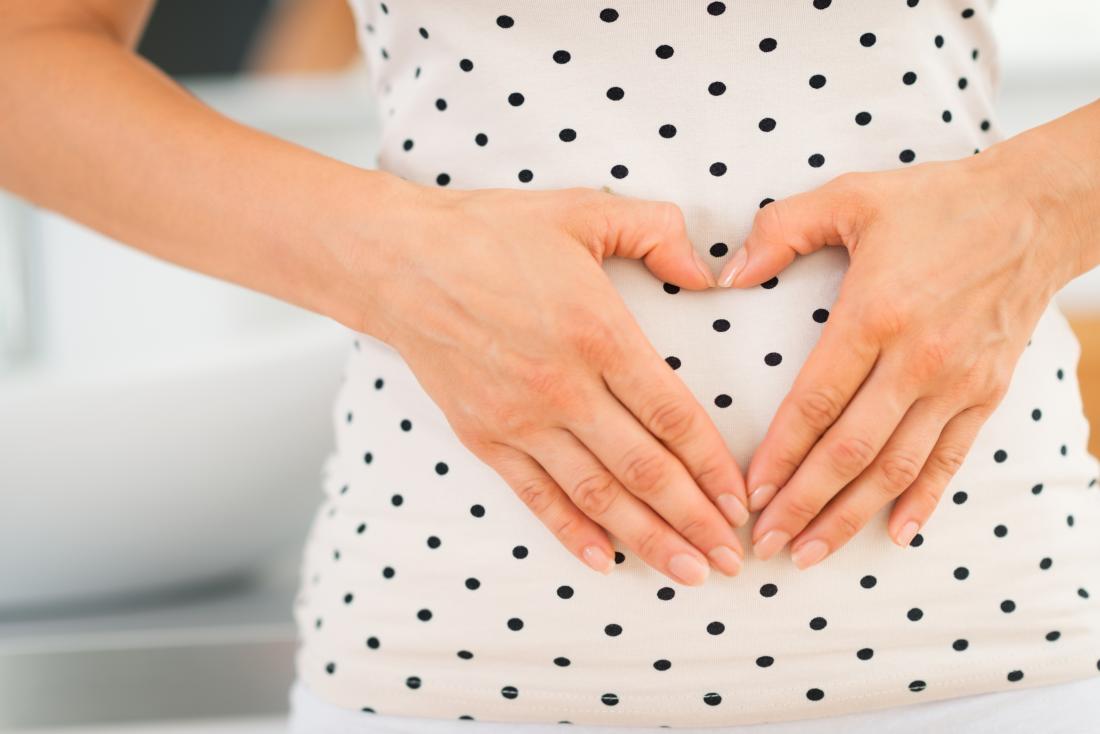
Bleeding during pregnancy is relatively common and doesn’t always mean there is a problem. It can be daunting and scary. However contrary to common beliefs, bleeding need not be a necessary harmful to a pregnant woman. However, it is important to take bleeding seriously at any stage of the pregnancy.
What are the possible causes of vaginal bleeding during pregnancy?
Causes of vaginal bleeding during early pregnancy include
1.Implantation bleeding: It is a harmless light bleeding that often occurs around the time your period would have been due. It occurs when the developing embryo implants itself in the wall of the womb.
2.Cervical changes: Cervical changes due to pregnancy may sometimes cause bleeding specifically after sex.
3.Miscarriage: During early pregnancy vaginal bleeding can be a sign of miscarriage. About 1 in 5 pregnancies miscarry and usually, the cause is in the fetus and not the mother or the partner. At the same time, it is important to note that many women who bleed at this stage of pregnancy go on to have normal and successful pregnancies.
4.Ectopic pregnancy: An ectopic pregnancy is when fertilized egg implants outside the womb, for example in the fallopian tube. It can cause bleeding and is dangerous.
Early detection and appropriate management is a must in this case, so as to prevent any life-threatening complication. Other less common causes are molar pregnancy (a mass that forms inside the uterus that does not result in a baby) and problems with the cervix such as a cervical growth or cervical or vaginal infections. Vaginal bleeding might also occur during the later second or third trimester of the pregnancy.
Some of the commonly occurring includes
1.Placenta praevia (low lying placenta): This is when the placenta is attached in the lower part of the womb, near to or covering the cervix. Bleeding from a low lying placenta can be very heavy and put you and your baby at risk
2.Placental abruption: It is a serious condition in which the placenta starts to come away from the womb wall.
3.Vasa praevia: A rare condition where baby’s blood vessels run through the membranes covering the cervix. When your water breaks, these vessels are torn and cause vaginal bleeding.
Vaginal bleeding towards the end of the pregnancy is normal. Often bleeding mixed with mucous (which is called show) can be a sign of the starting of the labor.
When to visit a doctor?
It is important to keep the doctor informed about any bleeding that may have occurred at any stage of the pregnancy. A woman should carefully note details such as the type of bleeding, its texture, whether it included any tissue or clots, other symptoms such as pain and dizziness To work out what is the causing the bleeding, you may need to have a vaginal or pelvic examination, an ultrasound scan or blood tests and according to the cause and how many weeks pregnant you are it would be advised whether you need to be admitted to hospital or not and further treatment would be planned and advised.
Pregnancy is a beautiful phase for any woman, and should be enjoyed to the fullest. That being said, pregnant women need to take care of their health at all times, as a young life depends on them. Taking into account how paranoid a to-be mother can be, any form of bleeding during pregnancy can cause a lot of trepidation. However, a lot of this worry is not really required at all.
A lot of pregnant women bleed during the first trimester of their pregnancy. As a matter of fact, many who bleed do not know or realise just how common it really is, and as a result, they get quite a lot more worried than they should. In fact, it happens to about one in five women who are pregnant.
Why bleeding occurs?
-It is quite likely that if a miscarriage is to occur, it will occur during the first trimester, or the first twelve weeks. As a matter of fact, bleeding is most likely to occur between weeks five and eight. A woman would get to know that she is having a miscarriage if there is tissue which is being passed, and at the same time, she feels some very intense cramps in the lower part of the abdomen.
-Another reason why women bleed, which is also quite likely to occur during the first trimester, is due to the process of implantation. However, this sort of bleeding is not heavy by any measure. The ironic thing is that a lot of women discover that they are pregnant by this form of bleeding and it usually occurs within a week to about twelve days after the conception has taken place.
-One of the more baffling reasons for bleeding when a woman is pregnant is bleeding which occurs after sexual intercourse. While it may seem odd that something which is supposed to be pleasurable should actually end up causing blood loss, all this is a sign of is that the tissues around the vagina are receiving a great amount of blood supply. It is to be noted, that no risk is caused the foetus because of this as it is located in the uterus.
What to do if you bleed?
-No matter how light or heavy the bleeding, the midwife or the doctor must be kept up to date with the situation at hand. This is because if there is any corrective action which is to be taken, the delay in time is to be kept to a minimum.
-A cause for genuine concern over the period of the pregnancy is if there is bleeding post 20 weeks. In most circumstances, bleeding is not worth the mental trouble.
Bleeding during pregnancy is relatively common and doesn’t always mean there is a problem. It can be daunting and scary. However contrary to common beliefs, bleeding need not be a necessary harmful to a pregnant woman. However, it is important to take bleeding seriously at any stage of the pregnancy.
What are the possible causes of vaginal bleeding during pregnancy?
Causes of vaginal bleeding during early pregnancy include
1.Implantation bleeding: It is a harmless light bleeding that often occurs around the time your period would have been due. It occurs when the developing embryo implants itself in the wall of the womb.
2.Cervical changes: Cervical changes due to pregnancy may sometimes cause bleeding specifically after sex.
3.Miscarriage: During early pregnancy vaginal bleeding can be a sign of miscarriage. About 1 in 5 pregnancies miscarry and usually, the cause is in the fetus and not the mother or the partner. At the same time, it is important to note that many women who bleed at this stage of pregnancy go on to have normal and successful pregnancies.
4.Ectopic pregnancy: An ectopic pregnancy is when fertilized egg implants outside the womb, for example in the fallopian tube. It can cause bleeding and is dangerous.
Early detection and appropriate management is a must in this case, so as to prevent any life-threatening complication. Other less common causes are molar pregnancy (a mass that forms inside the uterus that does not result in a baby) and problems with the cervix such as a cervical growth or cervical or vaginal infections. Vaginal bleeding might also occur during the later second or third trimester of the pregnancy.
Some of the commonly occurring includes
1.Placenta praevia (low lying placenta): This is when the placenta is attached in the lower part of the womb, near to or covering the cervix. Bleeding from a low lying placenta can be very heavy and put you and your baby at risk
2.Placental abruption: It is a serious condition in which the placenta starts to come away from the womb wall.
3.Vasa praevia: A rare condition where baby’s blood vessels run through the membranes covering the cervix. When your water breaks, these vessels are torn and cause vaginal bleeding.
Vaginal bleeding towards the end of the pregnancy is normal. Often bleeding mixed with mucous (which is called show) can be a sign of the starting of the labor.
When to visit a doctor?
It is important to keep the doctor informed about any bleeding that may have occurred at any stage of the pregnancy. A woman should carefully note details such as the type of bleeding, its texture, whether it included any tissue or clots, other symptoms such as pain and dizziness To work out what is the causing the bleeding, you may need to have a vaginal or pelvic examination, an ultrasound scan or blood tests and according to the cause and how many weeks pregnant you are it would be advised whether you need to be admitted to hospital or not and further treatment would be planned and advised.
Endometriosis worry about whether they’ll be able to conceive and carry a child. With endometriosis, uterine (endometrial) tissue collects outside of the uterus, in and around the reproductive organ. The result is often painful inflammation and the development of blood-filled cysts and bands of scar tissue called adhesions.
Fertility can be at risk when these endometrial tissue growths get in the way of the normal functioning of reproductive organs. Endometrial tissue that forms around the ovaries, for example, can keep eggs from being released. When the tissue forms around the fallopian tubes, it can get in the way of sperm traveling to the egg, or the fertilized egg from making its way to the uterus.
Although it can be challenging, G. David Adamson, MD a reproductive endocrinologist and surgeon with ARC Fertility and medical director of the Palo Alto Medical Foundation’s In Virtro Fertilization (IVF) Program sounds a hopeful note. Lots of women with endometriosis — as much as one-third — get pregnant naturally, without any fertility treatment at all, he says.
Even if a woman doesn’t conceive after a year of unprotected intercourse, he says that eventually, in some way or another, many women with endometriosis eventually do become pregnant. “With IVF, most women will get pregnant,” Dr. Adamson says.
“A big change from even a decade ago is the increased focus on research to understand and treat infertility in endometriosis going on around the world today,” adds Adamson, who is also president of the World Endometriosis Research Foundation. “Unfortunately, there isn’t a breakthrough yet, but we’re promoting global research and collaboration like never before. Many major research centers are collecting data and collaborating to find solutions.”
Surgery, Hormones, and Other Endometriosis Fertility Solutions
While endometriosis often makes conceiving a baby more difficult, it by no means prevents it, according to a review published in 2014 in Frontiers of Surgery. Surgery to remove endometriosis lesions is one option. But risks with this approach include the possibility that endometriosis symptoms will actually get worse, and interfere with blood flow to the ovaries. Surgery can also create scar tissue that’s worse than the original endometrial growth.
That said, surgery is also often successful, leading to pregnancy in 30 to 80 percent of women — though success depends in part on the severity of the disease, according to Adamson. A study published in June 2017 in the journal Acta Obstetricia et Gynecologica Scandinavica adds that surgery for endometriosis-associated infertility has become controversial in many parts of the world because its overall effectiveness is unclear.
If obstruction and blockages were the only problem, a simple surgery might be more consistently successful. But endometrial tissue in and around reproductive organs can lead to a separate set of problems, upsetting the normal chemistry of reproductive organs. It can get in the way of the delicate hormonal balance that helps fertility, for example, and change the mix of chemicals that make eggs ready to be fertilized.
Many experts believe IVF is helpful for women with severe endometriosis, especially those with many adhesions. But for women with mild disease, there’s still no clear consensus. The use of a hormone such as leuprolide along with IVF may help, but Adamson says researchers are still trying to understand how long women should be on this potent drug.
How to Make Pregnancy Possible
To prepare for making pregnancy possible with endometriosis, your doctor will probably start an evaluation of hormones and other chemicals in your body. Diagnostic tests like laparoscopy, hysteroscopy, and hysterosalpingography can also be very valuable in helping to understand what’s going on.
Making the choice among fertility drugs, surgery, IVF, and other assisted reproductive technologies is not easy. Fertility treatments can be expensive and are not always covered by insurance. Some treatment options work for some women, and not for others.
Choosing whether to pursue pregnancy with endometriosis is a very personal decision that depends on many factors, including the severity of your disease and your age. These factors can affect the quality and quantity of your eggs, even without the added complication of endometriosis.
Your decision might be influenced by heredity factors, too. Although most women with endometriosis have children who don’t go on to develop the condition, studies consistently show an increased risk of endometriosis for women whose mothers have it. Researchers don’t know yet whether this connection is the result of genetics or if it’s related to environmental factors — or both.
Yoga is widely recommended as a good exercise for pregnant women: It keeps the body limber, tones muscles and can relieve stress. But it comes with caveats, warnings that some poses can be dangerous and that all yoga should be done gently. Many women are also worried about doing yoga in the final weeks of their pregnancy.
A new study, published in the journal Obstetrics & Gynecology and described in the Harvard Health Blog, offers evidence that many yoga poses are safe until quite late in pregnancy -- including some that have previously not been recommended.
The study, led by a researcher from the Jersey Shore University Medical Center in Neptune, N.J., involved 25 healthy women who were 35 to 38 weeks pregnant. Ten practiced yoga regularly, eight were familiar with yoga and seven had no yoga experience at all. In one-on-one sessions with yoga instructors, the women performed 26 yoga postures. In some cases, the women were permitted to balance themselves with the aid of chairs or a wall.
The poses included four that some experts have deemed contraindicated for pregnant women: corpse pose, happy baby pose, child's pose and downward-facing dog.
But during all 26 poses, for all the women, vital signs of both mother and baby remained normal, the women felt safe and comfortable, and none had any problems such as contractions or vaginal bleeding within the following 24 hours. (Three women reported some muscle soreness but still liked the experience.)
The Harvard article noted that most women experience anxiety during pregnancy and about 13 percent of pregnant women experience clinical depression. "This study . . . adds to the growing scientific evidence that yoga is a helpful, safe tool to reduce stress, anxiety and depression throughout pregnancy," wrote the author, Marlynn Wei.










